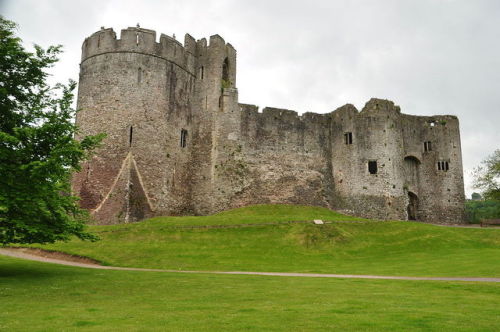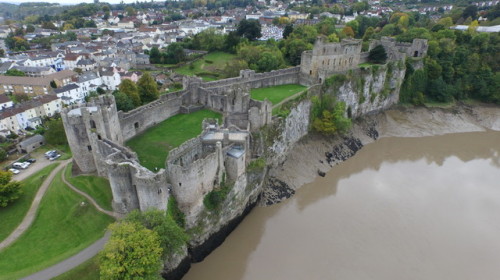mostly-history:Chepstow Castle (Moonmothshire, Wales).Construction on Chepstow Castle, on the south
mostly-history:Chepstow Castle (Moonmothshire, Wales).Construction on Chepstow Castle, on the south bank of the River Wye,began in 1067 under the instruction of the Norman Lord WilliamFitzOsbern. It was the southern-most of a chain of castles built inthe Welsh Marches.William Marshal, Earl of Pembroke, was the castle’s most famousowner. Beginning in the 1190s, he made improvements to itsstructure, building a new curtain wall with gates and towers aroundthe eastern bailey, which was one of the earliest defences in Englandto use round wall towers and true arrow loops.After his death in 1219, the castle passed to his sons, and in theperiod up to 1245 they made further improvements. The barbican (afortified gateway or outpost) was added in the west, defended by itsown ditch and guarded by a tower. A large new outer bailey was builton the east, protected by two lines of machicolations, and adouble-towered gatehouse that was closed by two portcullises.The western barbican.Roger Bigod, 5th Earl of Norfolk, inherited ChepstowCastle in 1270. Finishing in around 1272, he built the westerngatehouse to protect the barbican. Marten’s Tower, in the south-eastcorner of the curtain walls, was constructed over the course of the1280s and 1290s. Because of the increased security, a new range ofstone domestic buildings was placed along the inside of the northwall, including a large great hall that was completed in time forEdward I’s visit in December 1285.Martens Tower.The great hall. -- source link
Tumblr Blog : mostly-history.tumblr.com
#medieal#castle#norman#norman castle#wales#11th century#12th century

